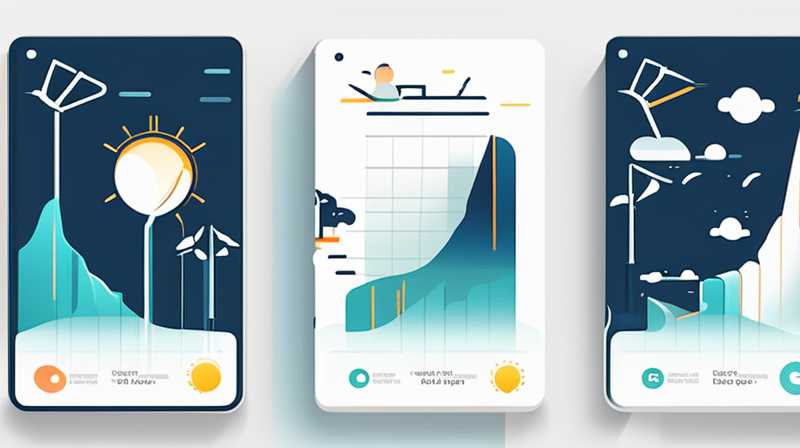
What are the disadvantages of solar and wind power?
1. Cost and Economic Viability, 2. Land Use and Environmental Concerns, 3. Reliability and Energy Storage, 4. Resource Intensity and Manufacturing Issues.
- Cost and Economic Viability:
Solar and wind energy require a significant initial investment. The high upfront costs associated with installation and technology can deter individuals and organizations from adopting these renewable sources. Despite decreasing prices over the years, the financial burden remains a notable hindrance. Tax incentives and government subsidies can alleviate some of this pressure, but the return on investment might not be immediately apparent, delaying adoption further. Additionally, the infrastructure required for integrating these energy sources into existing grids can be costly and complex. Localities may confront financial hurdles or require extensive funding to achieve energy transitions. - Land Use and Environmental Concerns:
The deployment of large-scale solar farms and wind turbine installations can lead to habitat disruption. Often, vast tracts of land are needed for wind farms and solar arrays, which may directly impact local ecosystems. This poses a critical challenge, particularly in areas with biodiversity. Additionally, the presence of wind turbines can pose a threat to avian species through collision risks, and noise pollution can disrupt nearby communities and wildlife. Land-use conflicts may arise, especially in populated regions or agricultural settings, linking energy generation with environmental and social opposition. -
Reliability and Energy Storage:
Both solar and wind energy are subject to fluctuations and depend on variable weather conditions. This intermittency can challenge the consistent supply of electricity, leading to potential energy shortages or grid instability. Wind power is reliant on sufficient wind speeds, while solar generation is dependent on sunlight availability, particularly during cloudy or nighttime conditions. To counteract these issues, energy storage solutions such as batteries are increasingly sought after. However, these storage systems can be expensive and have their own environmental costs associated with resource extraction and disposal. -
Resource Intensity and Manufacturing Issues:
The production of solar panels and wind turbines relies on various raw materials, including metals and rare earth elements. The extraction of these resources can result in environmental degradation and greenhouse gas emissions. Moreover, the manufacturing processes for solar panels and wind components can be resource-intensive and may have adverse environmental impacts, including pollution from manufacturing facilities. As demand for renewable technology surges, concerns about sustainable practices and ethical sourcing of materials become increasingly prominent, potentially undermining the environmental benefits associated with renewable energies.
FREQUENTLY ASKED QUESTIONS
WHAT ARE THE INITIAL COSTS ASSOCIATED WITH SOLAR AND WIND ENERGY INSTALLATION?
The initial expenses for solar and wind power installations can vary widely based on factors such as scale, location, and technology used. For residential solar panels, the upfront investment can range from $15,000 to $30,000 before any tax incentives or rebates. On the other hand, utility-scale wind farms can surpass $1 million per installed megawatt. However, these initial costs should be weighed against potential long-term savings on energy bills and reduced reliance on fossil fuels. In many regions, policies like net metering can allow homeowners to sell excess power back to the grid, enhancing the economic viability of solar energy. Furthermore, financing options, including leases or power purchase agreements, can help lower the barrier to entry for individuals and businesses.
HOW DO SOLAR AND WIND ENERGY AFFECT LOCAL WILDLIFE?
The installation of solar panels and wind turbines can have several impacts on local wildlife. For solar energy, large solar farms may disrupt habitats that certain species rely on, especially if located in ecologically sensitive areas. In contrast, wind turbines pose a threat to birds and bats through collision risks, as well as causing habitat fragmentation. Research indicates that the placement of wind farms is critical; proper siting can mitigate adverse effects on avian populations. Additionally, noise pollution generated by turbines may disrupt wildlife behavior, affecting migration patterns and reproduction. Environmental assessments are often required to evaluate the potential impacts before installations proceed, highlighting the need for a balance between renewable energy development and wildlife conservation.
WHAT CHALLENGES ARE PRESENTED BY ENERGY STORAGE SYSTEMS?
Energy storage systems, particularly batteries, represent a key solution for addressing the reliability issues of solar and wind power. However, these storage solutions come with their own set of challenges. The high cost of efficient storage technologies remains a significant barrier, as many existing battery solutions are expensive to install and maintain. Furthermore, the environmental implications of battery production, particularly lithium-ion batteries, raise sustainability concerns throughout their lifecycle. Issues around sourcing materials, such as lithium or cobalt—which can lead to environmental degradation and human rights issues—further complicate the adoption of energy storage systems. Additionally, current battery technologies still have limitations regarding energy density, lifespan, and disposal challenges post-use, which need to be addressed to enhance the long-term viability of renewable energy solutions.
In summary, the exploration of solar and wind power reveals various challenges that must be addressed for a sustainable energy future. The initial costs associated with adoption pose significant barriers to widespread implementation. Furthermore, land use and environmental concerns highlight the need for thoughtful planning and consideration of local ecosystems. Reliability issues underscore the importance of energy storage solutions, which, while promising, come with high costs and environmental impacts of their own. Finally, the resource intensity of manufacturing renewables accentuates the necessity for ongoing research into sustainable practices. As the world shifts towards cleaner energy sources, understanding these disadvantages is crucial for stakeholders involved in the energy sector. Collectively, addressing these challenges can accelerate the transition to a more reliable, efficient, and environmentally responsible energy landscape.
Original article by NenPower, If reposted, please credit the source: https://nenpower.com/blog/what-are-the-disadvantages-of-solar-and-wind-power/


